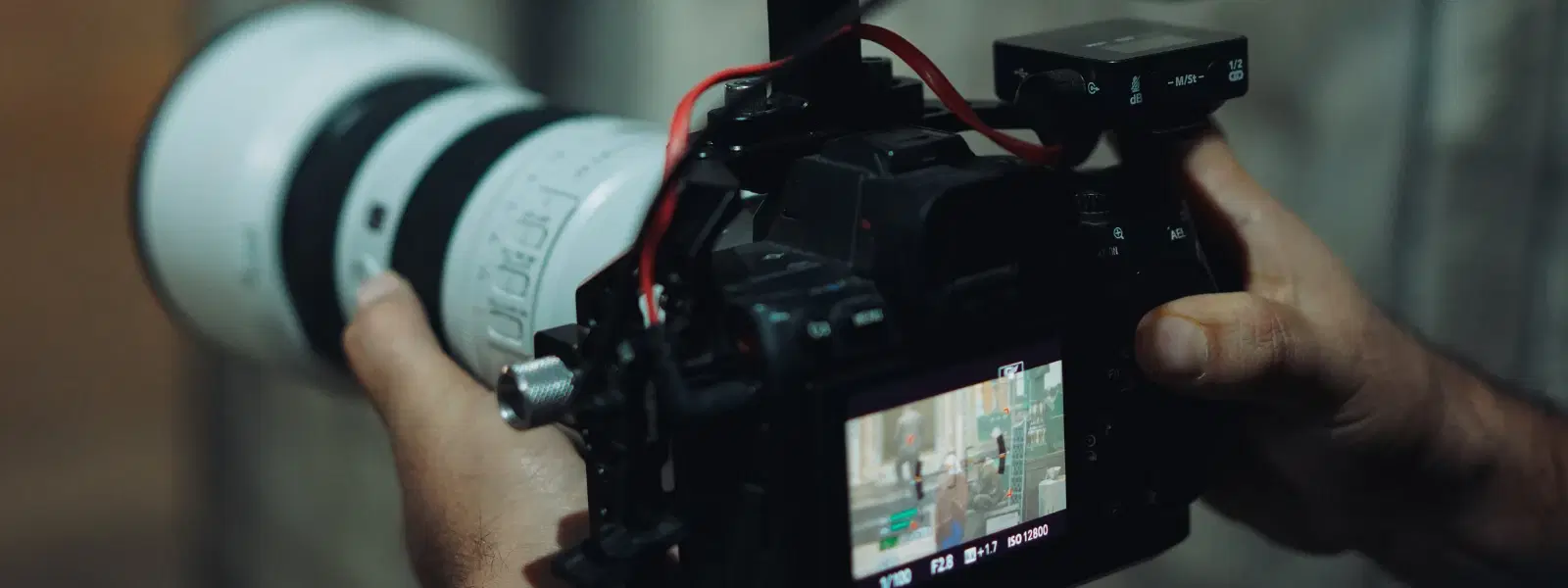
Consumer Electronics
•03 min read
Imagine observing nocturnal wildlife effortlessly even in the depths of darkness. Thermal night vision cameras empower enthusiasts to see the unseen, revealing the mysteries of nature with advanced thermal imaging technology and night vision optics. This guide demystifies the use of a thermal night vision camera and explains its capabilities—from understanding heat detection to realising its full potential in wildlife observation.
Thermal night vision cameras use sophisticated sensors to detect heat signatures, turning invisible warmth into vivid images. Unlike traditional devices that depend on available light, these cameras convert heat energy into images, making them indispensable when it comes to exploring nature at night. Although terms such as 'thermal scope' and 'infrared night vision device' are often used interchangeably, it is important to note that thermal detection is based on heat rather than light amplification.
With thermal detection devices, you are able to see through obstacles such as fog, smog, and even foliage because the presence of heat is what is measured, not reflected light. Traditional night vision optics often struggle under these conditions, thereby positioning thermal cameras as a more reliable alternative for many wildlife enthusiasts.
When selecting a thermal night vision camera, there are several key features that warrant attention. One of the most important aspects is the sensor sensitivity, denoted by its NETD value. A lower NETD means that the sensor can detect smaller differences in temperature, which is crucial when trying to spot wildlife amidst a cooler background.
Objective lens size and resolution also play critical roles in influencing the clarity and detail of the images. Moreover, features like waterproof construction and durability ratings, such as an IPX7 rating, ensure that the camera can withstand various weather conditions during your adventures.
There is a wide variety available on the market, from dedicated thermal scopes and monoculars to comprehensive wildlife observation cameras that offer robust performance. Whether you are embarking on your first wildlife encounter or are a seasoned explorer, balancing cost with essential features ensures that you invest in the right tool for your needs.
Getting started is simpler than you might think. Calibrating your thermal detection device correctly can make a significant difference in its performance. Begin by following manufacturer guidelines to set your camera optimally. The positioning and angle can also enhance heat detection, ensuring that you capture accurate images of animals in their natural habitat.
Identifying wildlife by their heat signatures without disturbing their natural behaviour is an art. With a thermal surveillance equipment, you can trace the subtle hints of nocturnal activity while keeping a respectful distance. This approach is particularly useful when observing animals like foxes, owls, and deer in their quiet moments.
Enhancing low light imaging involves fine-tuning various settings. For extended range and pinpoint clarity, pairing the camera with a thermal scope can be incredibly effective. This combination not only delivers sharper images but also enables you to capture details that would otherwise be lost in the dark.
Proper maintenance of your infrared hunting cameras and other heat sensing devices is crucial to prolonging their lifespan and efficiency. Always clean the lenses with a soft, lint-free cloth and store your device in a protective case when not in use. Avoiding exposure to harsh environmental conditions will help preserve the sensitive components.
If you encounter issues such as blurry images or calibration errors, ensure that your device is not subjected to rapid temperature changes. Common fixes include recalibrating the camera, checking connections with any accompanying apps, and monitoring battery performance. These steps can resolve many minor issues, keeping your device running at its best.
Expert Tip
Did you know that high-quality thermal cameras are capable of detecting heat signatures even when concealed by foliage? This trait makes them exceptionally useful for exploring dense forest environments and capturing wildlife activity that would otherwise remain hidden.
While wildlife observation is a popular use, there are several other innovative applications for these cameras. They can be employed for home security, extending their utility to safeguarding your property during nighttime hours. Furthermore, emerging trends include smartphone-compatible thermal camera apps, making it easier than ever to integrate thermal imaging technology into everyday life.
Advancements such as bi-spectrum imaging and deep learning are paving the way for even more precise detection and analysis. Some experts are looking forward to a future where augmented reality is combined with thermal imaging, offering an immersive experience that takes wildlife tracking to a whole new level.
Thermal vision excels in complete darkness and through obstructions like fog or foliage, while traditional night vision relies on ambient light or infrared illumination.
Yes, with compatible attachments, smartphones can serve as basic thermal cameras, opening up opportunities for casual observation.
Absolutely. Thermal cameras detect heat signatures, which makes them highly effective even in total darkness.
Thermal cameras capture the heat emitted from objects, while infrared cameras work by detecting reflected infrared light to create images.
Mastering a thermal night vision camera for wildlife observation opens up a new realm of possibilities in exploring nature after dark. By understanding the features, optimal setup and maintenance tips provided in this guide, you can enhance your outdoor adventures with the power of thermal imaging technology. This approach ensures that every excursion into the wild is backed by smart, customer-first support, much like the trust placed in Tata Neu for a seamless shopping experience. Embrace the journey of night-time exploration and let the technology guide you to new discoveries.